“Firefighter Is a Profession” — How Poles Are Changing the System in Kenya
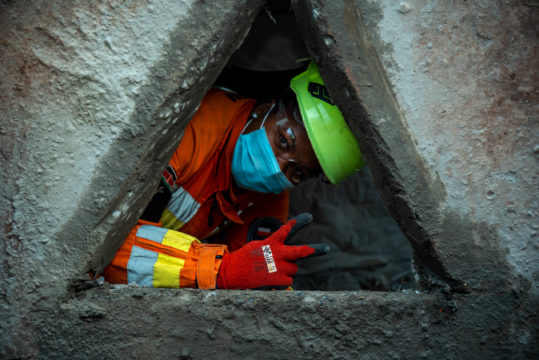
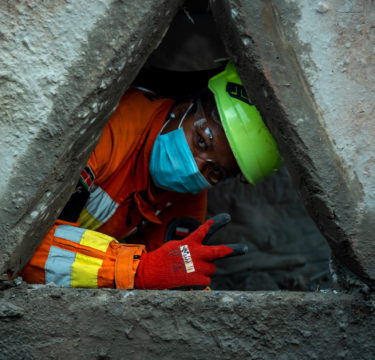
“The Kenyan fire service was recently where Poland was in the 1970s,” says Tomasz Traciłowski, a Polish instructor who has just returned from Kenya. Until not long ago, firefighters in this country had very low public trust and were often victims of attacks. Today, thanks to cooperation with Polish specialists, they are becoming guarantors of safety — extinguishing fires, rescuing people from under rubble, and teaching the public how to react in the face of disasters.
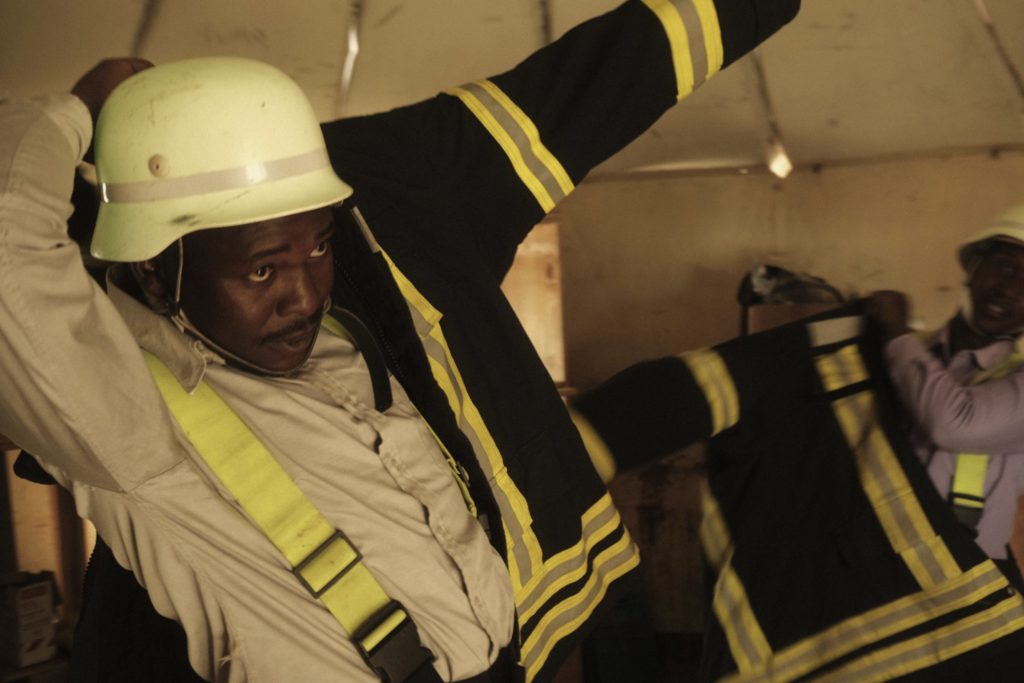
Kenyan streets are full of contrasts — bustling Nairobi, with its chaotic roads, overcrowded matatu minibuses, shouting drivers, and throngs of pedestrians, forms the backdrop for the daily struggles of residents with rapidly advancing urbanization. Here, a growing metropolis faces mounting challenges: an increasing number of building collapses, often due to poor-quality materials and illegal construction, and a dramatic rise in road accidents, which are a frequent reason for rescue service interventions.
The road situation requires special attention. The lack of a unified emergency number for the fire service and insufficient hydrant infrastructure in many areas are major problems delaying responders’ actions. Traditionally, the role of firefighters is to put out fires, but in Kenya that help often means fighting for survival — without equipment and proper training.
Yet when it comes to firefighters’ safety, the threat often isn’t just the flames.
“What struck me right away, when I first came to Kenya, were the barred windows of fire trucks,” says Tomasz Traciłowski.
“And why is that?”
“Simply put, because of hostility,” he explains. “The fire service here had a very bad reputation. Firefighters often ended up being attacked with stones,” Traciłowski recalls.
“Why did Kenyans dislike firefighters so much, since they were supposed to help?”
“It’s complicated, but the Kenyan fire service was in a dreadful state. That meant they often didn’t arrive on time and people’s property had already burned down. On the other hand, if they did arrive, their water reserves quickly ran out due to the lack of hydrants, so they couldn’t keep fighting the fire. The result was that their actions were ineffective. Another problem was that people simply weren’t used to calling the fire service.”
“So when a fire broke out, did they just magically hope the fire brigade would come?”
“Not magically,” the firefighter laughs. “But they didn’t know where to call. In Kenya, there isn’t a single nationwide emergency number like in Poland. Each county has its own number. That’s why we emphasize not only improving firefighters’ skills but also educating Kenyans themselves — so they know how to react in case of a fire or accident, and above all, whom to call,” he explains.
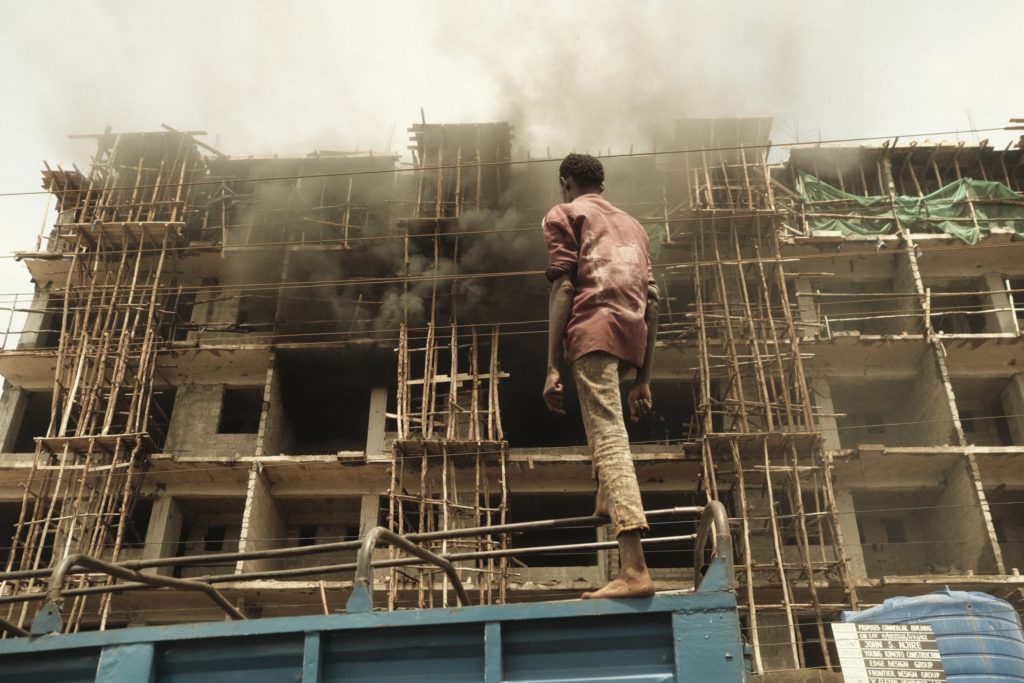
20th Century in the 21st Century
“When we started in Kenya, the fire service reminded me of what Poland was like in the 1970s,” recalls Tomasz Traciłowski.
“Was it really that far behind?”
“There were equipment shortages — which still exist — but when funding is found, that’s simply a matter of investment.”
“So what was the real problem?”
“The system, and the very understanding of what a fire service should be. I already mentioned the lack of a general emergency number, but also the mentality was like Poland 50 years ago: ‘The fire service is for putting out fires, and that’s it.’ Today, the fire service also secures road accidents, provides first aid, helps during disasters, etc. That’s what we started instilling in Kenya,” says the firefighter.
“In Poland, firefighters enjoy the highest level of public trust. And here?”
“In Kenya, there’s still a long way to go, but the change is very visible. People are increasingly calling them for help, and in our project we also stress raising public awareness. Firefighters go to schools and educate children, encouraging them to alert the services as soon as possible, which increases the chances of a positive outcome,” Traciłowski notes.
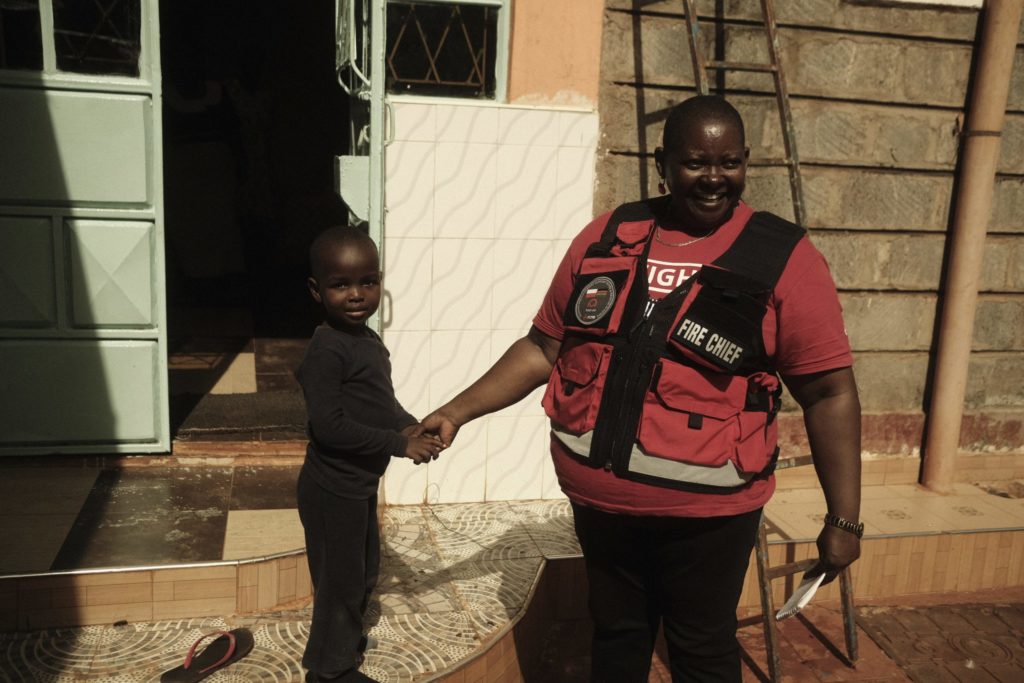
Historically, Kenya’s fire service system has roots in its British colonial heritage and for years remained fragmented, inconsistent, with units operating at the county level without central oversight or unified standards. Only since around 2014, thanks to the involvement of the Polish Center for International Aid (PCPM), have modern training programs and infrastructure development been introduced, radically changing the face of the fire service.
“When we began our mission in Kenya, many things had to be built from scratch. On the other hand, we often faced things unheard of in Poland, which stemmed from Kenya’s past,” recalls Traciłowski.
“I thought helmets, crowbars, or chainsaws were more or less the same everywhere.”
“Yes, but fire hoses can already have different fittings,” he explains. “In Poland, we use hoses where water can flow both ways — in other words, it’s easy for us to change the direction of extinguishing. In the UK, you can’t do that,” adds the Polish firefighter.
“On the other hand, there are areas of firefighting that we created from scratch and where they use procedures and equipment identical to Poland’s.”
“What do you mean?”
“When we launched the project in 2014 — and let me note, those were very modest beginnings — there were no firefighters in Kenya with rope rescue specialization. We worked with people who had no experience at all. That actually made training easier for us, because they didn’t have any bad habits,” Traciłowski recalls.
After 10 years, the PCPM Foundation has managed to transform Kenya’s Fire Service — from a chaotic, poorly equipped system of scattered units into an organized, gradually professionalizing structure with national certification exams for firefighters. Thanks to PCPM’s involvement, the number of units grew from a few dozen to more than seventy, and the number of firefighters from a few hundred to over 1,600.
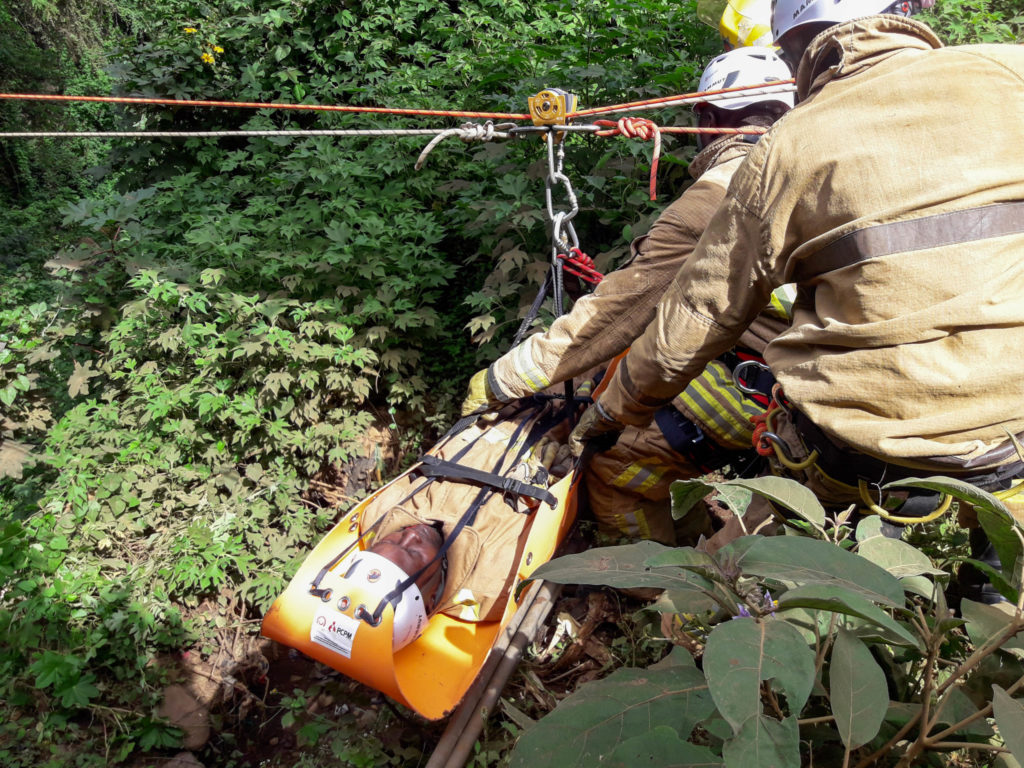
“Beyond the tons of equipment we’ve delivered, one of the biggest achievements was officially recognizing ‘firefighter’ as a profession,” says project coordinator Magda Jarocka. “Thanks to our efforts, firefighting became a formal career path, with certification. This is hugely important for thousands of people in Kenya,” stresses the PCPM worker.
For over 10 years, the Polish Center for International Aid has been implementing these changes in Kenya through the Polish Aid program, financed by Poland’s Ministry of Foreign Affairs.
“The next step in developing Kenya’s fire service is building a professional Urban Search and Rescue team — a special rescue group operating in urban areas, especially after building collapses. We’re halfway there, and since 2024 we’ve been training selected firefighters in Kenya,” says Magda Jarocka.
Helping in the Rubble
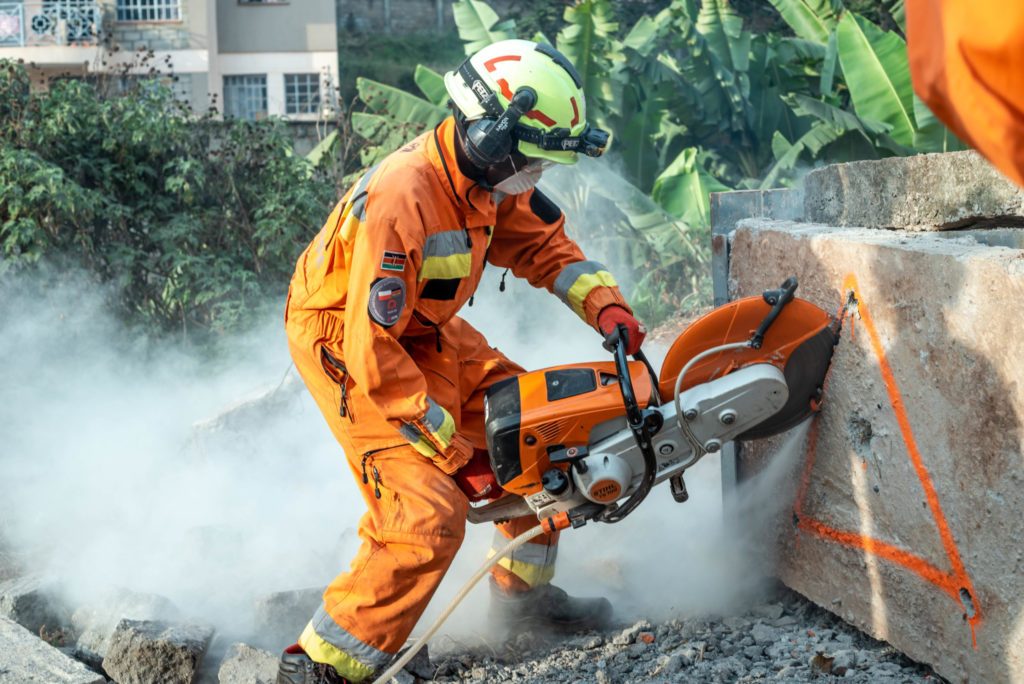
In April 2025 in Suneka, a building collapsed. Despite a stop-work order, the developer continued construction, which ended in the tragic deaths of five people. Also in April, an 11-story building collapsed in Mombasa, though fortunately without casualties. These are just selected examples — in Kenya, such incidents are common.
Kenya’s rapid development and the urbanization of Nairobi and other cities bring new dangers — building collapses and road accidents are, sadly, becoming everyday occurrences.
“In Kenya, you hear about such accidents all the time. In Poland, there are several USAR groups — search-and-rescue teams. In Kenya, until a year ago, there wasn’t a single one,” says firefighter instructor Maciej Garczyński. “Now we’re steadily training more firefighters, and soon there will be two teams working in Kenya’s most urbanized area — Nairobi,” Garczyński adds.
The USAR team being created by the Polish Center for International Aid is not only the first of its kind in Kenya but also the first in this part of Africa.
“To be honest, my job is already easier, because many of these firefighters already have part of the skills needed for such a team. They were also preselected for this training, so working with them was very rewarding,” Garczyński recalls.
“Have you already seen progress?”
“Yes, a lot. Because aside from the training, they’re constantly active.”
“What do you mean?”
“In Kenya, there are dozens of building collapses every year.”
“That’s a lot,” Garczyński remarks. “Which means they often respond to such accidents. In the past, the military often handled these, but now our team increasingly does, especially as they continuously gain new skills.”
“And what do you teach in such training — couldn’t the army just do it?”
“A lot of things, but I’d say there are two main pillars. First, specialist knowledge — how to move, how to secure the area, etc. Second, equally important, is crisis management,” Garczyński emphasizes. “In the end, anyone can help by lifting rubble and tossing it aside, but you need a specialist who can assess what can be done and what can’t,” sums up the Polish instructor.
The challenges remain enormous: underfunding, equipment shortages, the need for better public education, and for more integrated rescue operations. Yet thanks to Polish-Kenyan cooperation and growing awareness of the role of firefighters, Kenya is taking its first steps toward a modern rescue system — one that has a real chance to protect its citizens from the consequences of disasters and accidents.